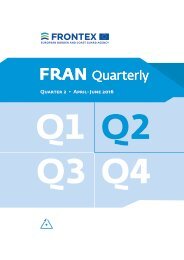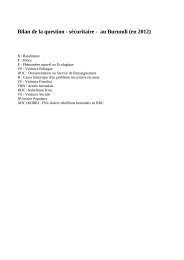You also want an ePaper? Increase the reach of your titles
YUMPU automatically turns print PDFs into web optimized ePapers that Google loves.
GOVERNANCE<br />
in early Islamic history renowned for extremism) and its call for solidarity in<br />
the face of the coalition alliance against IS. This statement might have led IS<br />
to believe it could win over elements within AQAP to develop affiliates in<br />
Yemen. For at least three months after the official declaration of Yemen as<br />
part of the IS provinces, however, there was no evidence of IS activity there;<br />
then statements began to be distributed in the name of various IS provinces<br />
within Yemen, primarily making clear the intent to target Houthis with mass<br />
attacks. This was also a theme in the IS nashid (hymn), “Oh Son of Yemen.”<br />
The evidence for IS governance in Yemen is limited, and it appears the fortunes<br />
of the IS affiliates in this regard were likely hurt considerably by internal<br />
dissent that came to light in December 2015, when dozens of members,<br />
including several high-ranking officials, rejected the overall wali appointed<br />
by IS over Yemen. This ultimately led to an intervention by the IS Distant<br />
Provinces Administration, which expelled from the ranks those perceived<br />
to be the ringleaders of the conspiracy, with a further statement expelling<br />
those who persisted in their dissent. How many abandoned their dissent is<br />
not clear. As with the Sinai affiliate, the advertised material mainly points to<br />
military operations—which have also targeted the Persian Gulf–led coalition<br />
forces, particularly in the southern port city of Aden. From Aden, documentary<br />
evidence also points to attempts by IS members to impose Islamic law,<br />
but the evidence is poorly crafted and amateurish. Also as in the Sinai, a<br />
photo series emerged of a medical clinic, supposedly under the Diwan al-<br />
Siha, but this clinic actually appears to be meant for the treatment of IS<br />
fighters. Thus, IS administrative structures that exist in Yemen mainly seem<br />
directed toward internal management of the ranks, rather than governance<br />
over the population.<br />
The remaining case to consider is that of Libya, which has seen much<br />
more successful IS governance develop than the other affiliates in the Middle<br />
East and North Africa. Originally, IS governance in Libya was concentrated<br />
in the city of Darnah in eastern Libya, which, to be sure, was never controlled<br />
entirely by IS. This administration developed out of a pledge of allegiance<br />
to IS by a local jihadist group called Majlis Shura Shabab al-Islam,<br />
which moved quickly in October 2014 to set up institutions in Darnah mimicking<br />
the IS bureaucratic system in Iraq and Syria, such as an Islamic court<br />
and Diwan al-Hisba, under the moniker of “Cyrenaica province.” A Diwan<br />
al-Taalim branch also emerged in the area, and documentary evidence attests<br />
to the existence of a Diwan al-Dawa wa al-Masajid (responsible for religious<br />
outreach and control of the affairs of mosques). This presence in Darnah city<br />
33






